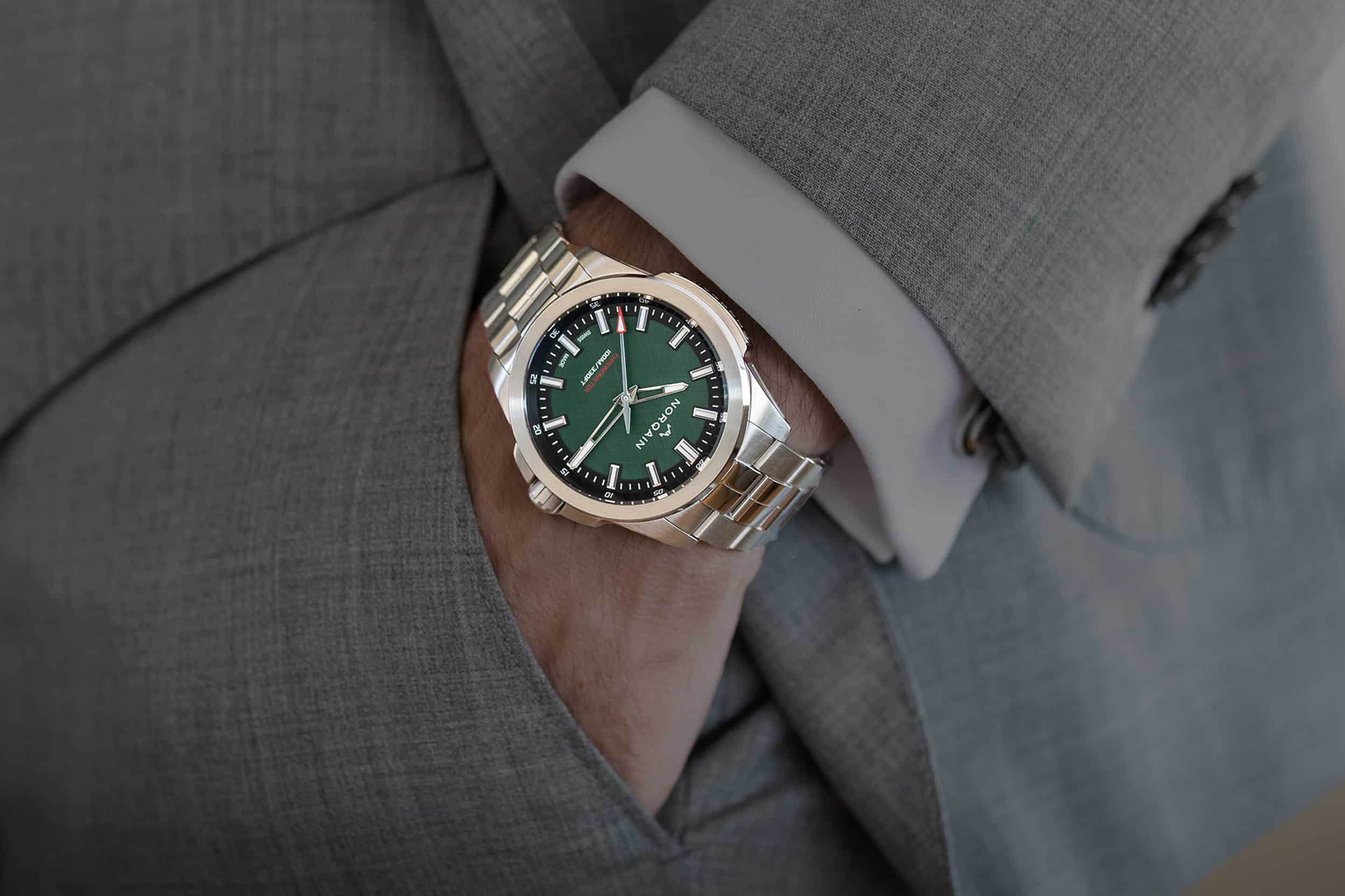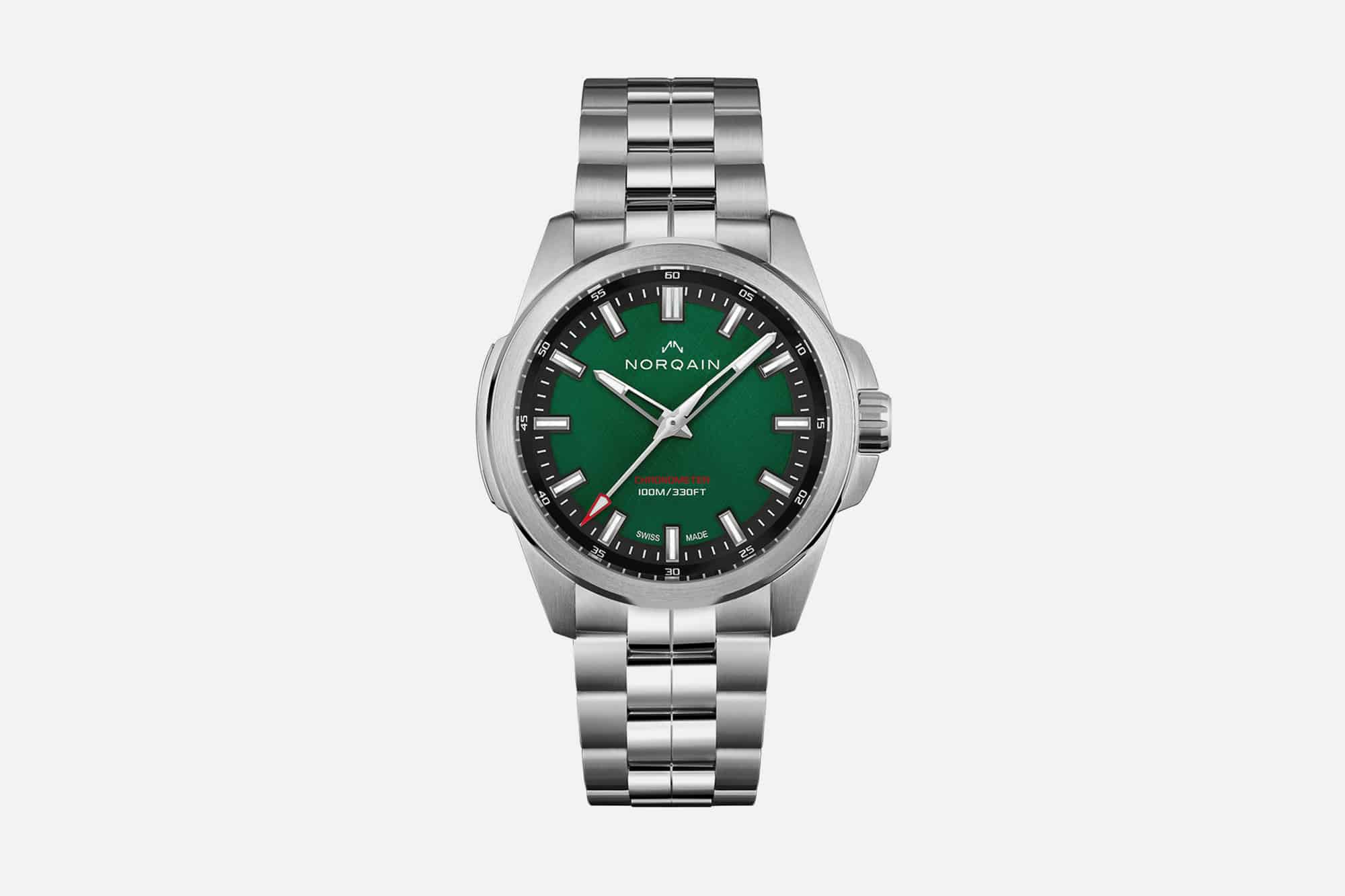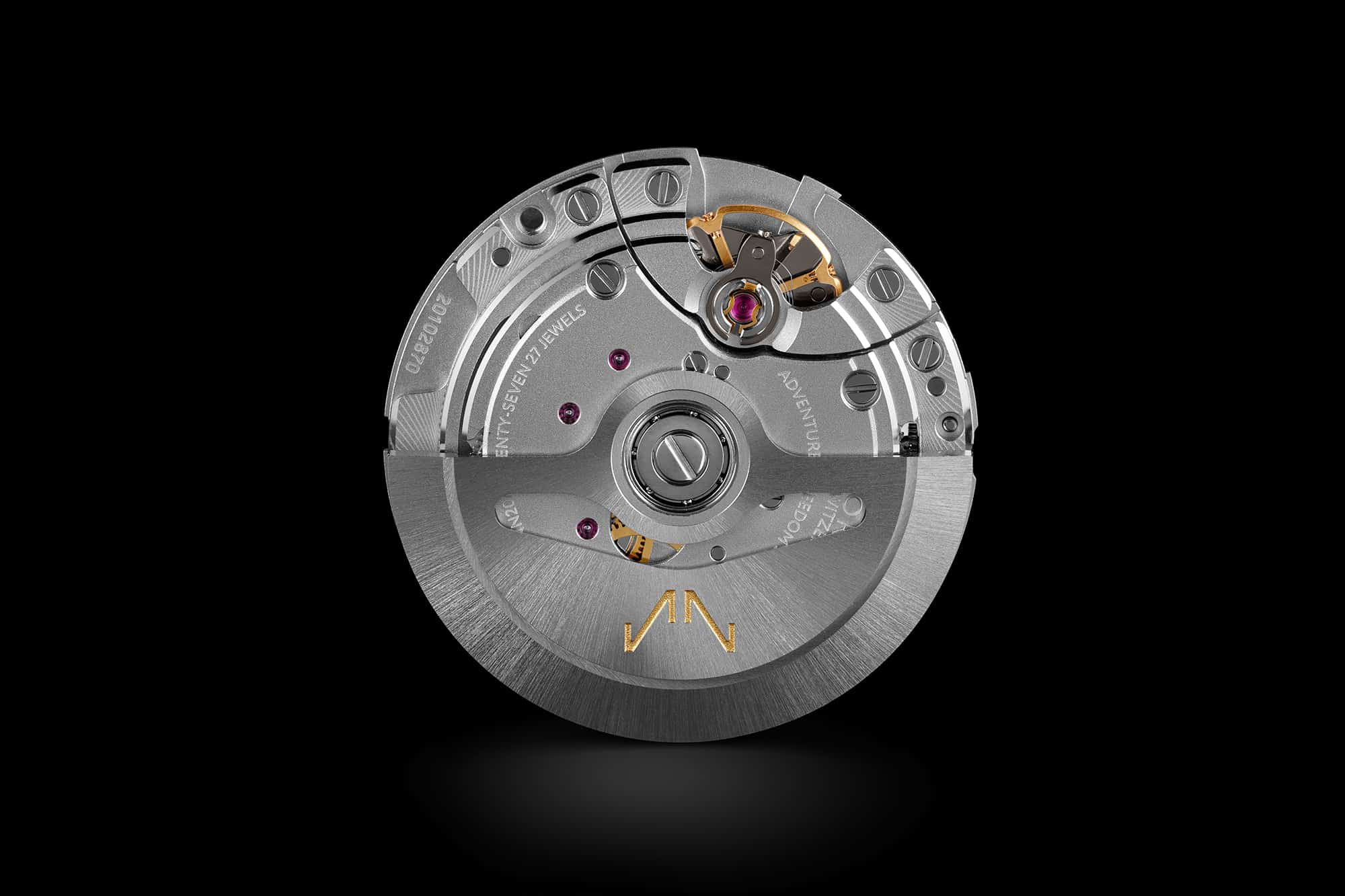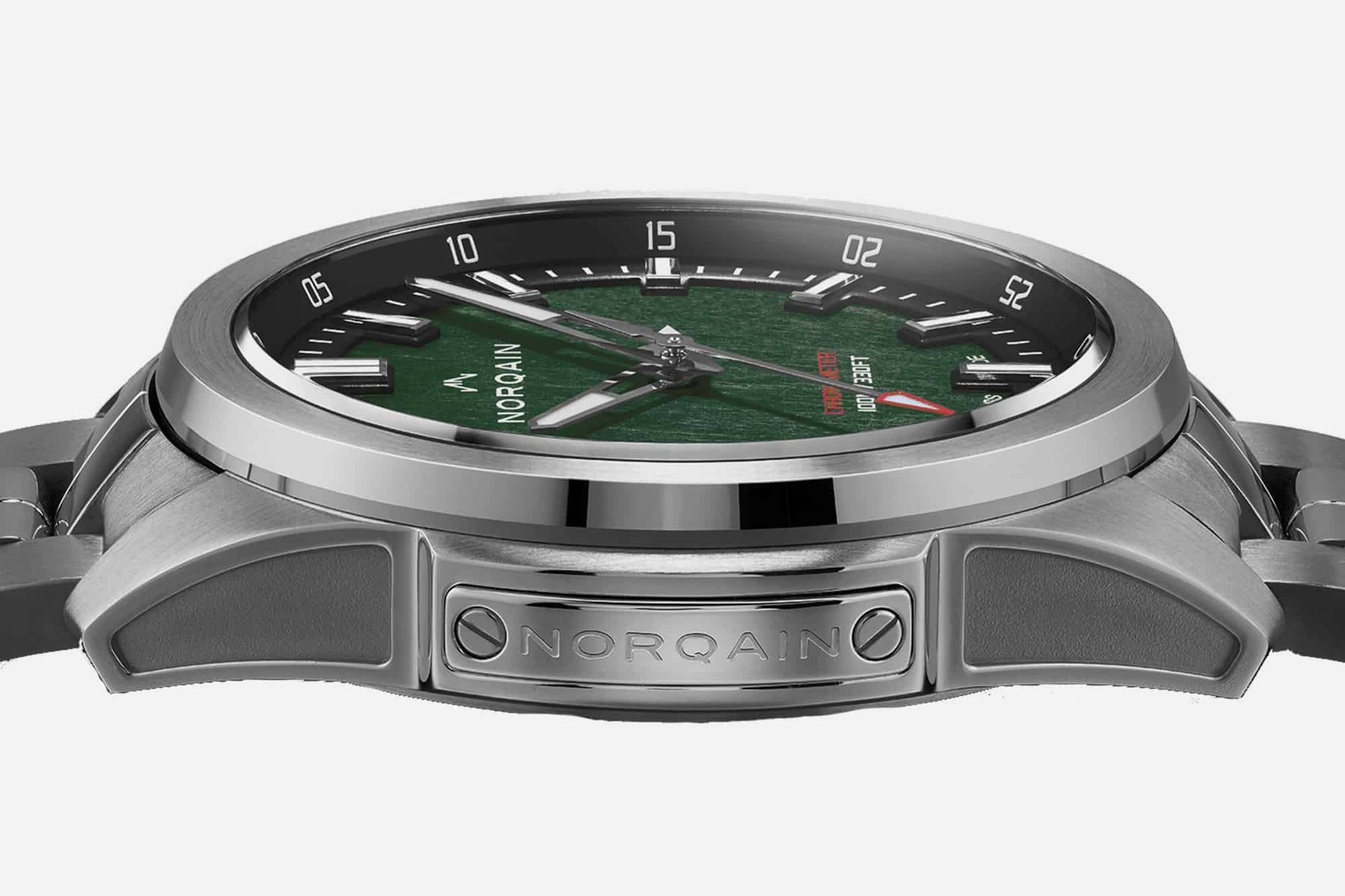The big news with the Independence 20 is the movement, dubbed Caliber NN20/1. This movement in collaboration with Kenissi, the firm founded by Tudor to produce their own in-house movements. The NN20/1 has many of the same attributes as Tudor’s movements, including the free sprung balance, a full balance bridge, a 70 hour power reserve, and COSC certification. (An important difference, and one that might account for the lower cost of the Independence 20 when compared to Kenissi powered Tudors, is the lack of a silicon hairspring in the NN20/1.) It’s no secret that at Worn & Wound we’re big fans of Tudor’s in-house movements (we just discussed this very topic in a recent podcast), so a caliber that is nearly identical, made by the same people, in a package that’s considerably less expensive than an already value oriented product naturally has our interest piqued.
We should perhaps take a moment here to define our terms when it comes to “in-house” movements and so forth, and also lay out exactly what Kenissi is, and is not. Kenissi, based in Geneva, is purely a movement manufacturer (not a watch brand), and shares production space with Tudor. Kenissi has been around since 2016, and is managed by Tudor directly, and has been a semi-exclusive partner of theirs since 2018. Kenissi has also produced movements for Chanel (who, as of 2018, owns a 20% stake in the movement maker), and now Norqain, but otherwise could be thought of as “the industrial arm of Tudor,” as they’ve been referred to in the press. Since they have a controlling interest in Kenissi, it seems fair to label Tudor’s movements “in-house.” This is obviously a nuanced topic, and reasonable people will have differing views on when and how the in-house moniker should be applied, but this kind of tight relationship between a big brand and specialty supplier is not unheard of in the watch world.
![]()









 Featured Videos
Featured Videos










